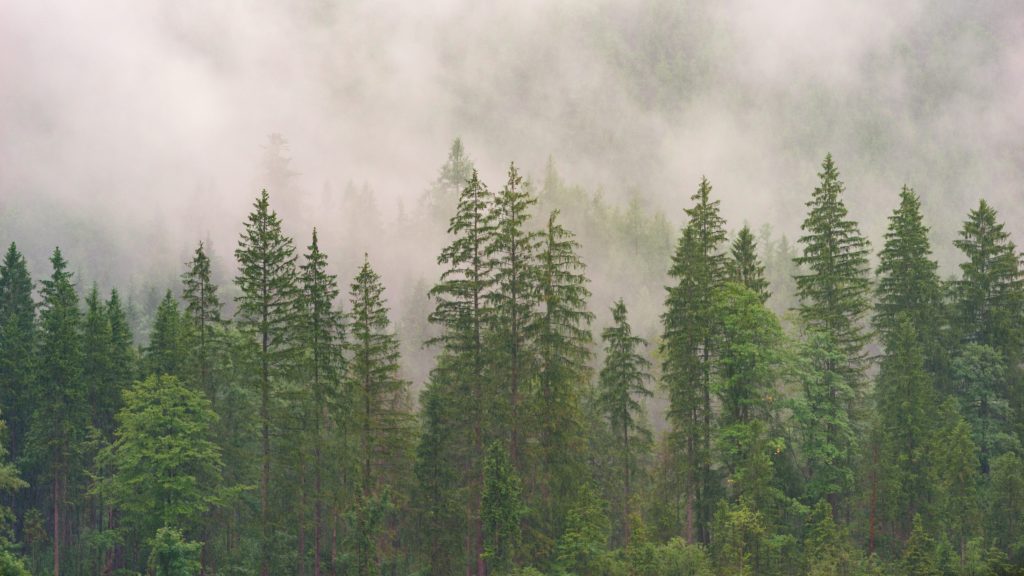
In 2012, the United Nations declared that the 21st March would be the International Day of Forests. This day raises the awareness of the importance of forests and their biodiversity, and on this day communities and nations are encouraged to undertake activities and discussions that celebrate and safeguard these habitats.
On the International Day of Forests 2020, we wanted to take a moment to appreciate some of the ways that forests enhance our lives, and to think about some of the ways in which they have been vital to human survival, past and present.
Wood

It is something that we learn very early in our education – wood comes from trees. For most, that is as far as the understanding ever needs to go. It is hard to appreciate the sheer scale of the forests around the world from which timber is harvested, and the process by which a tree becomes your coffee table is something that most people never need to understand.
Humans have harvested wood from trees since we first developed an understanding of creating something from the materials around us. We have used wood for fuel and to create tools, weapons, buildings and furniture from early Palaeolithic times to the modern day, only refining and broadening the scope of our creations.
On the International Day of Forests 2020, we should take a moment to appreciate the number of items in our homes and offices that wouldn’t exist without wood, and the ways that our lives would be different without them.
Air Quality, Nutrient Cycling & Carbon Storage
Forests also provide critical global services in nutrient cycling, carbon sequestration and air quality management. The phrase ‘the earth’s lungs’ is often used to describe forests, and there is some truth to it. Forests have an amazing capacity for removing carbon dioxide and pollutants from the air and producing oxygen. The trees then sequester the carbon and pollutants such as sulphur dioxide, nitric acid, ammonia and nitrous oxides within their own biomass, effectively reducing the levels of these in the air. The end result is cleaner air containing more oxygen and less carbon dioxide, which not only improves the air that we breathe but also helps to combat global warming.
Structural Maintenance

Another benefit of forests – and trees individually – is that in many places they quite literally hold the ground together. The roots of trees form a complex network that holds soil in place, preventing erosion by wind, heavy rain and flooding. In landscapes like deserts, where there are no trees, the wind blows the sand around uninhibited, and there are many examples of landslides and ground subsidence caused by heavy rain or flooding following the removal of trees.
In the case of mangroves, the trees that hold the ground together create an active barrier against floodwaters and tidal activity. Research has suggested that without the flood protection created by these habitats, flood damage would cost approximately $65 billion more each year.
Forest Products
Forests provide a huge diversity of food and other products that are used throughout the world. Fruits and nuts are cultivated and harvested for food, fibres are used for fabric and plastic composites and elements of trees can be extracted and used in products ranging from flour to pesticides. Many forest plants also have medicinal value, and have been used throughout human history to treat a range of diseases and ailments. Investigating the potential medicinal value of forest plant components and extracts is a major focus for many modern-day researchers, and there is still a lot to be discovered.

Biodiversity
In many ways it is the biodiversity of forests that gives rise to the wealth of forest products discussed above, but biodiversity is more than simply the ecosystem services and economic value that can be derived from a habitat. Forests across the world – notably tropical and subtropical rainforests, but not exclusively – provide a home to up to 90% of the world’s terrestrial biodiversity. The majority of the plants and animals that live in forests are unique to these habitats, and are a fascinating part of the world that we live in. While the existence of many of these species does not directly benefit humans (forest products aside), this biodiversity holds an inherent value that is absolutely irreplaceable, and the world would be a great deal worse off without it.
Native People
Our societies benefit from forests in mostly remote ways. We marvel in learning about rainforest animals and enjoy buying a new dining table. Some of the medicines that we use regularly likely have their roots in a rainforest somewhere. But there are, and have always been, people who rely on forests in a much more immediate sense.
Tribes of humans have lived in forest habitats for thousands of years. Many modern civilisations can trace their ancestry back to rainforest origins, and there are still native people living in the Amazon rainforest today. The vast majority of these tribes are now aware of and interact with the outside world, but there still remain a small number of uncontacted tribes. For these people, the forest provides everything that they need to survive.
Forests on your doorstep
While most of the ways that we benefit from forests are distant, one of the exceptions is the simple value of being in a forest. These habitats are often described as places of peace, where it is possible to escape the rush of modern life and find a sense of calm. Being able to get out of the house or office and spend some time in a natural environment is hugely beneficial to mental health (something which of particular importance in this time of home-working). Beyond this, forests provide recreational opportunities including a space for walking, cycling, running, wildlife watching, mountaineering, orienteering and a place for children and dogs to run rampant.

The International Day of Forests is an opportunity for us to consider the importance of forests in our lives. These habitats provide so many benefits, both material and spiritual, and they are something that we should fight for in the face of increasing deforestation and large-scale development. But for now, especially if you’re one of the many stuck at home, find your nearest woodland and get out there.
Further Reading
CABI’s Forest Science Database provides a comprehensive resource for current news and research on all things Forest Science. The articles included within this resource include:
Explore CABI’s forestry books on the CABI Bookshop:
Related News & Blogs
‘Branching out’ for more sustainable ways to protect global biodiversity with the world’s trees
Trees and forests play a significant role not only in the future of the human race but in the earth itself and in ways you might not even imagine. Think, for instance, that almost 50% of the fruit we eat comes from trees – not to mention the nuts and s…
19 October 2020









